#high design history
Text
PREMIERES TODAY AT 12:00 PM (PST)
Largest Black Market Grow in U.S History is a Glass House? (Documentary)
https://youtu.be/6PF7ccCou8M
#youtube#entrepreneur#marijuana news#cannabis education#lets talk cannabis#cannabis industry news#marketing#cannabis content#marijuana industry#cannabis stocks#glass house cannabis#Kyle Kazan#high design by lmc#high design history#california cannabis#cannabis youtube
2 notes
·
View notes
Text
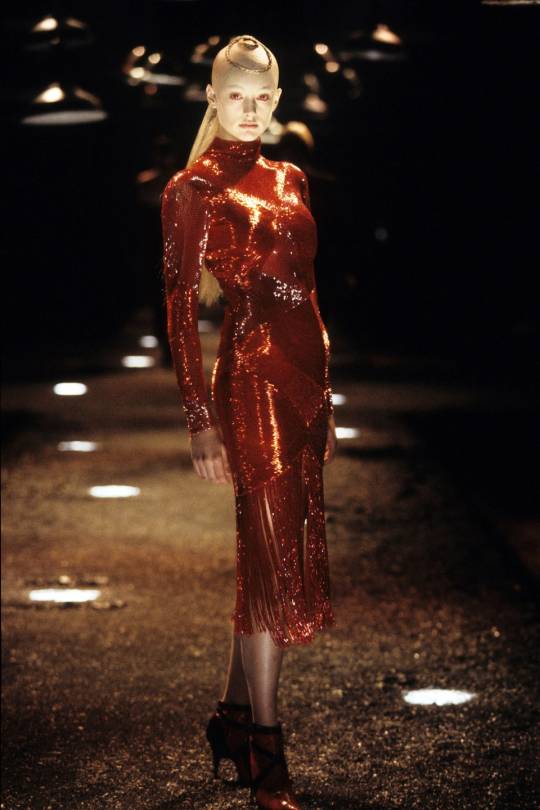
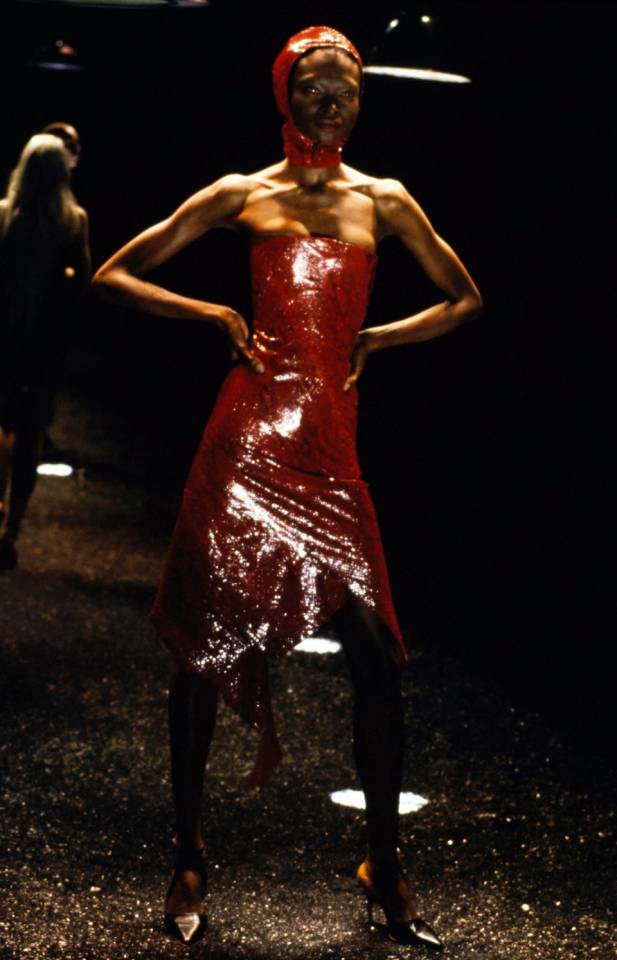


Alexander McQueen fall 1998 rtw.
#alexander mcqueen#fashion#fashion moments#high fashion#vogue runway#couture#runway#vogue#womenswear#lee mcqueen#design#style#satanic#demonic art#fashion history#haute couture#ready to wear#runway fashion#fall/winter#fashion model#redesign
471 notes
·
View notes
Text

rip to bruce but if i fumbled her i would literally kill myself
#wrote this caption before trying to figure out if the artist intended for this to be a qipao or not#settled on the fact that he did (the mandarin collar sealed it) and spent 2 hour reading a brief history of them#and terminology to try and make an accurate ID but my 'ohmygof she's so fucking hot' got QUICKLY replaced with anger#like in 1930 Shanghai there were so many designs that did feature more form fitting fabric & high side slits#theres so many general gorgeous designs with the elaborate pankous and embroidery and beading that you could of taken inspiration from#and you make it more or less a unitard. you go hm close enough just to sexualize her further#like yeah she's gorgeous my caption stands but the disrespect and disregard is so... you know.#anyways. messy little ramble over. if im bruce wayne im killing myself and also thepankou(.)com has really beginner friendly posts talking#about the history of them & different (general) region styles & the use of qipaos in different media and exhibits. also a GORGEOUS wardrobe#crypt's panels#talia al ghul
105 notes
·
View notes
Text
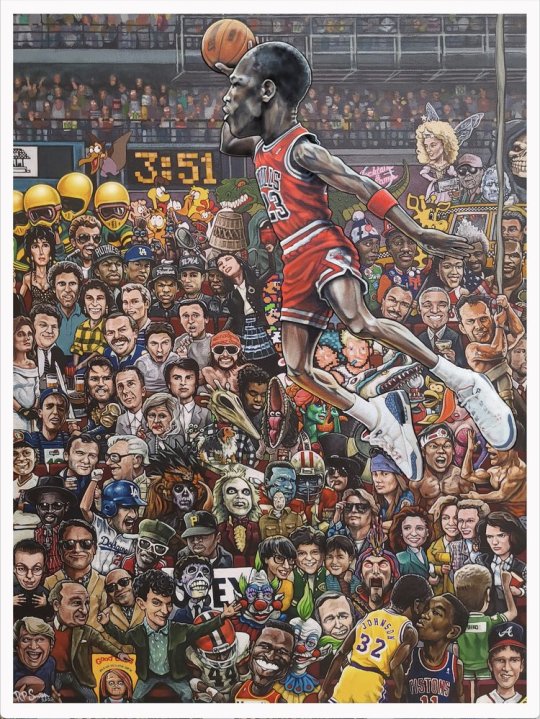
1980's
#decade#history#1980s#eighties#80s#1980s horror#1980s nostalgia#1980s fashion#1980s movies#art#sports#film#life#good#bad#everything#everything everywhere all at once#indeedgoodman#legend#fyp#luxury#fashion#design#high fashion#model
97 notes
·
View notes
Text


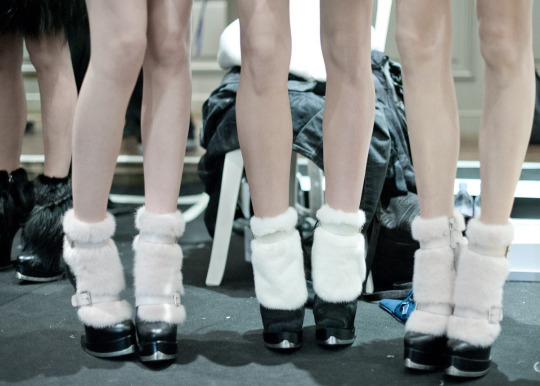
+ alexander mcqueen fall 2012
#dream shoes#fashion#alexander mcqueen#mcqueen#shoes#shoespo#runway#editorial fashion#high fashion#alternative#artwork#designer#art#pale grunge#design#style#fluffy#furry#archival fashion#fashion history#boots#2012#y2k#snowy#fairy
189 notes
·
View notes
Text

📌 "pressure is kinda my thing." 🔍
=====
we are so back baby
hello dimension 20 fans, have some riz art because i love him so dearly and he is my favorite fictional character ever lol
also probably my favorite art piece in recent drawings it just looks SO pleasing. no yeah most definitely my favorite it looks so clean
probably gonna turn this into a charm/keychain for myself, at least a sticker for my collection! if more people are interested in that lmk and maybe i'll consider buying in bulk and selling em if i can lol
==========
reblogs > likes, but any interaction is appreciated :D! tysm for seeing my art regardless :]!
#didn't give him the glasses details because they made it look cluttered but maybe i'll add em back later!#first time drawing riz in his junior year design and WHEW it's very fun#i drew this in 2.5 hours during my art history i was like an art MACHINEEEE#just churned this out while barely listening to my professor im so sorry teach#the hyperfixation overtook me#aloe.art#dimension 20#fantasy high#d20#riz gukgak#d20 fantasy high#fhjy#my art#digital art#green#yellow#dnd#save me riz gukgak#artist#art#artwork
73 notes
·
View notes
Text


#laquan smith#luxury#aesthetic#beauty#quiet luxury#high maintenance#brand design#level up#mens style#mens fashion#melanin beauty#melanin#black history#black people#black history month#black man#us#outfit inspo#black tumblr#street fashion#nyfw2024#nyfw#nyfw24#style#opulence#luxury lifestyle#rich lifestyle#rich black men#successful#celebs
62 notes
·
View notes
Text
Sketch page after marathoning the original run of Clone High
LOVE the slick artistic vision that UPA gave the world
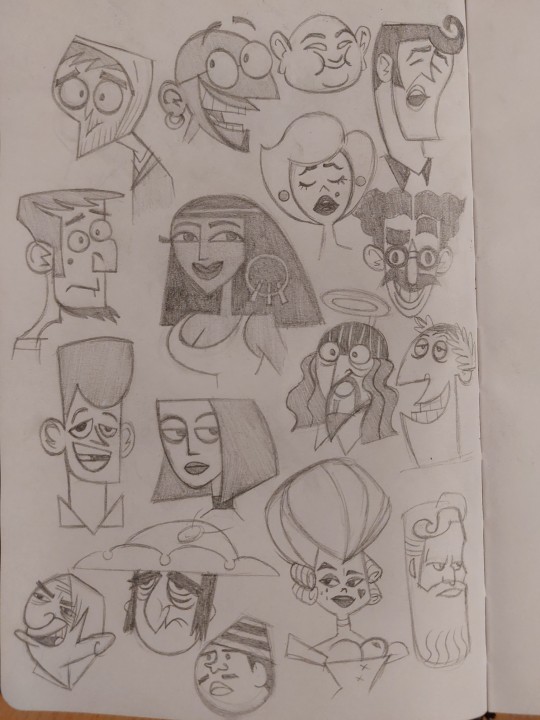
50 notes
·
View notes
Text
Brutalism and High Modernism in ANDOR's Production Design
So about a week ago I wrote about how the production design of Ferrix was clearly coming from a Bauhaus school of design, and I might have threatened to write about the use of Brutalism on Coruscant, and some of you fools have encouraged me. So you have only yourselves to blame for this.
I hope you're happy with yourselves.
First, the disclaimer: while I have taught AP Art History in the past, and am a nerd about architecture, I am mostly an autodidact about this stuff. My areas of expertise are in history, anthropology, political science, and education. So please understand that I am not specifically trained in this, and when (not if) I get something incorrect, I'm always open to friendly and helpful correction.
Now. ONWARDS TO CORUSCANT!
I will admit, friends, that I am very much Not A Prequels Person, and I haven't watched any of the animated Star Wars series, so I can offer no points of comparison between ANDOR's depiction of Coruscant and other SW media. I can only work off of Luke Hull's vision of the galactic capital, and-- damn, that is no bad thing.

We'll start with an aerial view from episode 7. As the camera soars over a portion of the endless city, we see the occasional building with strong geometric shapes-- such as the one on the above right-- that look like nothing so much as the Chrysler Building in New York City. I mean, look at those stacked triangular corner pieces and the metallic cladding on some of those curves! It's such a strong, unmistakable reference. Now, if you know your architecture, you'll be like, "But SomeInstant, this rant is supposed to be about Brutalism and High Modernism, and that's clearly an Art Deco reference!" AND YOU ARE CORRECT, MY FRIEND. Good eye!
Art Deco is an international style-- one of the first!-- that developed following World War I, reaching its height of influence in the late 1920s and early 1930s. It was associated with style, glamor, craftmanship, rich materials, and a sense of technology and progress. And it shares a common ancestor with Bauhaus designs-- they're both strongly influenced by the Vienna Secession movement. But while Bauhaus was about the accessibility and utility of design for the Common Man, Art Deco was fancy. The materials weren't your common brick or tile: it's chrome and ivory and inlaid tropical woods. Mon Mothma's apartment has some serious Art Deco references in it, if you want to look-- those pretty geometric white screen things between rooms? That's what I'm talking about.
So what we have here is a building that is speaking the same stylistic language as the buildings on Ferrix, but with a VERY different accent, and to a totally different audience. I would like to think that both the building we see here on Coruscant and, say, Maarva's home on Ferrix were built around the same time-- but the language of power and privilege and the physical reality of each are totally separate.
But what happens if we move lower? What if we stop just looking at the skyline, and adjust our gaze down a little?
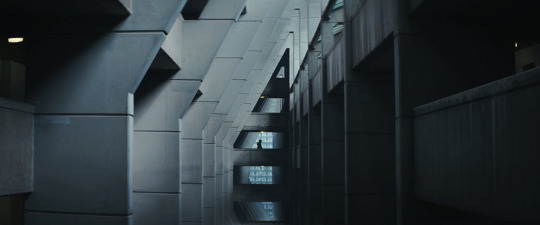
Now, this is Brutalism. (And also a killer shot, god damn.)
So. As an architectural and design form, Brutalism has its roots in post-World War II Britain, and is marked by a reliance on the plain, unadorned exposure of building materials such as concrete, steel beams, plate glass, exposed pipes, and bricks. In its emphasis on common materials, Brutalism is closely related to Bauhaus design. But Bauhaus uses more rounded shapes, and plaster or tilework to turn everyday materials into decoration. Brutalism foregoes that finish, however-- and it has a certain stark, clean appeal, especially when its done thoughtfully.

Brutalism is a style of design that is often associated with public constructions: mass transit, public housing, libraries, universities, government offices. If you've ever been to Washington D.C., the Metro is a great example of this-- that coffered cement curve of the ceiling? Pure Brutalism. And this is because Brutalism could be a form of design that was simple and cost effective. At its best, Brutalist designs offered simple, affordable housing, and could be constructed relatively quickly. Personally, I really dig a lot of Brutalist architecture-- it can be amazing!

But there are many, many criticisms of Brutalism as a design form: it can feel impersonal, cold, and flattening. It's very strongly associated with forced population movements: that is, the destruction of existing neighborhoods, and the mass relocation of people for convenience's sake. (That is, for the convenience of the state. We'll come back to this.) Take a look at Soviet-era apartment blocks, or the forcible relocation of the Inuit in Greenland in the 1950s-- the housing that was provided was typically Brutalist in its design. Thus, Brutalism has become historically associated with totalitarianism and the strong hand of the state, and the loss of individualism.

Another reason why some folks object to Brutalism as a form is the exposure of construction materials like concrete can mean that the surfaces can become stained and discolored, or wear unevenly in some climates. The broad, flat surfaces can become the target of graffiti-- I mean, if you have a problem with that, which I don't, because it can be amazing and the only difference between graffiti and public art is usually the zip code and price tag. Actually, a lot of very cool Brutalist buildings are beloved not because of their designs, but because of the fact that they're perfect for murals. Check out much of downtown Atlanta or Mexico DF (especially the campus of UNAM) for evidence of this.
But I haven't seen a single mural or tag on any of the shots of Coruscant thus far: it's just sterile, industrial concrete as far as the eye can see. That's state control for you.
So, anyway-- that's a Very Good Thematic Reason to use Brutalism as the main design influence on the lower echelons of Coruscant. If the Art Deco skyscrapers are coming from the same lineage as the Bauhaus design on Ferrix and speak to the Empire's surface-level ambitions, the Brutalist underpinnings of the galactic capital show its organizational power.
Which leads us to High Modernism.

High Modernism comes out of Brutalism, historically-speaking-- but as you might be able to guess, the materials used in its construction tend to be more polished than the unrefined, simple finishes of Brutalist architecture. No vast planes of concrete here: no, bring on the sheets of glass, the slabs of polished stone. There's still a strong geometric language at play, a lack of ornate decoration-- but there's a degree of sterility in High Modernism that isn't present in Brutalism.
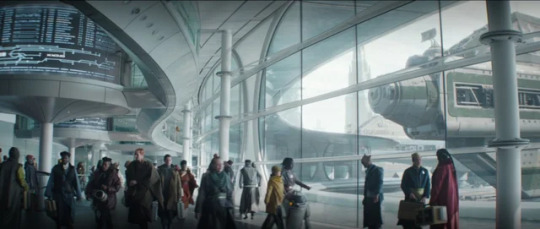
High Modernism is associated with the Cold War era of the late 1950s and 1960s-- and is therefore a DAMN good style choice for the ISB. My god. It's a design school that is all about technology and control: control over the environment, control over civic spaces, control over labor-- you name it.
The thing I associate with High Modernism above all else is the notion of state legibility: the idea that populations and spaces are organized into a structure that the state can read and therefore control. James C. Scott has a whole book about this, called Seeing Like a State. It's not my favorite of his works-- that would be Weapons of the Weak-- but his overriding thesis about how state policies of legibility are often destructive to culture and communities are worth coming back to. I mean, think about city and civil engineering, housing laws, city grids-- or Imperial sectors.
In our world, maybe the best example of High Modernism would be the work of Le Corbusier and his followers-- I mean, consider Brasilia! It's an artificially planned city, designed to reflect the aspirations of a growing nation: Ordem e Progresso, right? High Modernism tends to disregard historical realities, cultural practices, and the way people actually use spaces-- which, again, is exactly why Luke Hull is giving us this:
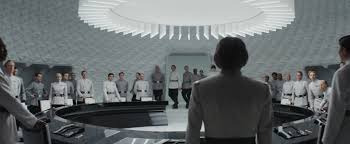
It's almost like these folks at ANDOR are good at their damn jobs, or something.
(Join me next time on SomeInstant Talks About Architecture in Andor: Wait, Is Niamos Space Acapulco, or What?)
#art and architecture#andor spoilers#andor#episode 4 spoilers#episode 7 spoilers#episode 6 spoilers#brutalism#art deco#high modernism#academic nonsense#sometimes i teach art history#production design#this is now a luke hull fanpage#star wars design#star wars#coruscant
188 notes
·
View notes
Text
dishonored is really interesting with the fashion design and influences of real historical garments that come into play, and while I really enjoy how both men and women wear pants and there are no skirts to be seen, I do have to wonder, with how form fitting the suits are
where do people put their shit when they can’t possibly have functional pockets
#dishonored#li.txt#Ive been thinking about this so much#Im a little insane about fashion history so this has been Bothering me#because women had massive pockets in those victorian skirts#is that why going from the first to the second game you can carry less stuff at you?#is that why corvo could shove a million grenades and darts into his massive jacket and emily is like 'actually 3 sleep darts will do thank '#I wanted to make a joke about how its just womens pockets situation#but thinking about it as 'the high society just thinks skin tight everything is hotter besides who needs pockets anyways'#theres probably a completely sensible game design reason to it but I like to overthink things
49 notes
·
View notes
Text
Arkansas Basketball Star to Cannabis Entrepreneur: Elite Eighth's York Jr. (Documentary)
PREMIERES IN 20 Minutes 👇
https://youtu.be/V6bLp7StgHc
#youtube#entrepreneur#marijuana news#cannabis education#lets talk cannabis#cannabis industry news#marketing#cannabis content#marijuana industry#cannabis stocks#high design history#high design cannabis#high design documentary#york jr
1 note
·
View note
Text
Trying to do worldbuilding for a planet is very hard when you don't know anything about astronomy, physics, hard science in general, and haven't taken a math class in several years
I wanted the planet to be small but otherwise Earth-like but apparently a planet that small would not be dense enough to hold an atmosphere together unless it was real close to its sun and if I wanted it to be real close to its sun while still being habitable it'd have to be a red dwarf star and actually a planet that orbited a red dwarf star that close would probably be tidally locked and the colors would be all weird and wait, how old is the planet, what about the moon, fuck we gotta figure out the tectonic plates, how the fuck do THOSE work--
.
.
..if this were a spec bio or sci-fi setting these would be interesting topics im sure. But I'm trying to put together a HIGH FANTASY SETTING. These guys wouldn't even appreciate the work I'm doing here!! In their setting the sun is a deity who handles LEGAL MATTERS they don't CARE ABOUT THISSSS
#the only reason any of this came up is because I wanted to figure out how big the continent was. which is fairly important#to figuring out travel distances and stuff.#and then i thought oh u kno whatd be fun. if in the setting theres only one continent. like if pangea 2 happened#and then i realized oh then the continents gonna have to be big or the planet has to be small#but a big continent doesnt WORK w the story so its a small planet#but it cant be TOO small or else ALL THE OCEANS WOULD EVAPORATE APPARENTLY!!!! OR THE SUN WOULD BE RED#or their wouldnt be a day-night cycle or. fuck the plants wojld be black or something#again this is an earth-like planet that evolved humans. its a high fantasy setting.#i want to give an astrophysics student like $20 and have them just do this for me#listen im a history major i can handle all the cool stuff. just tell me how big the fuckin planet is so i can calculate travel time.#please.#wolfy speaks#worldbuilding#planetbuilding#i guess. technically#i tried looking up worldbuilding resources for designing a planet but they all got into stuff ive never heard of.#sir im a history major. do i look like i know what the eccentricity of a rotation is or whatever#im a ding dong i need someone to give me ghe worlds simplest formula
21 notes
·
View notes
Text
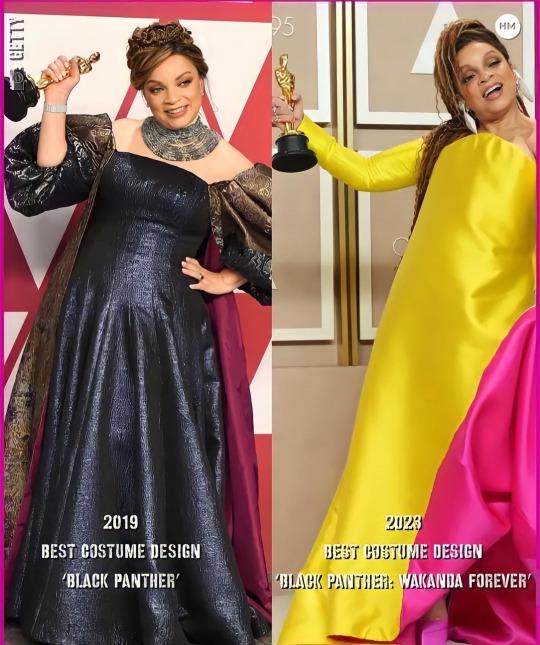
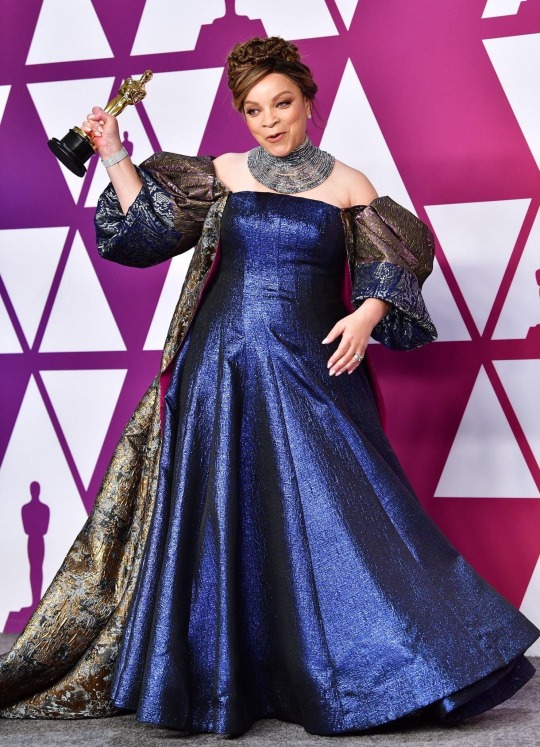

Ruth E. Carter is the first Black woman in to win two Oscars! 🏆 🏆
#ruth e. carter#academy awards 2023#oscar’s 2023#black history#black beauty#high fashion#superhero#marvel#black panther wakanda forever#costume design
59 notes
·
View notes
Text
#art#fashion#design#luxury#fyp#legend#model#high fashion#indeedgoodman#hiphop#soul#throwback#The Mack#blaxploitation#1970s#70s#1970s history#1970s music#1970s movies
22 notes
·
View notes
Text

John Singer Sargent (American, 1856–1925) • Mrs. Abbott Lawrence Rotch • 1903 • Private collection
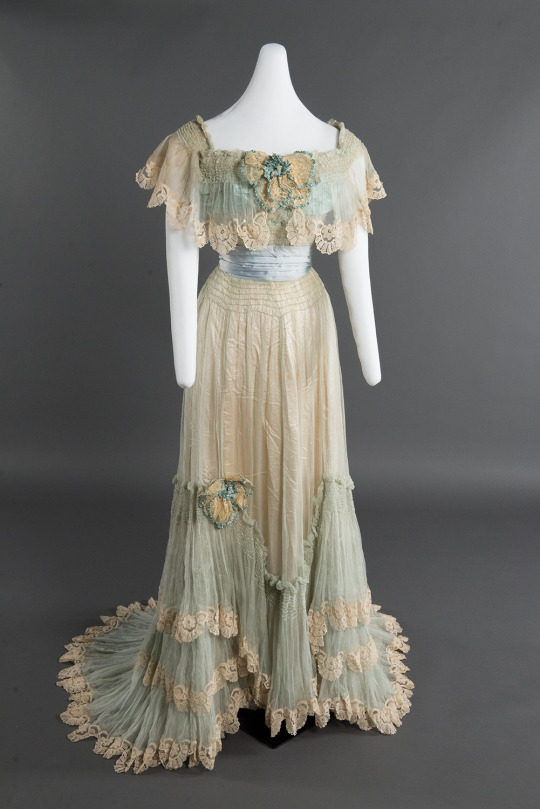

Dress Credit: Callot Soeurs (French, active 1895–1937), Evening dress, about 1900, silk, chiffon, and linen lace • Private collection
Viewing both the portrait and the photograph of the dress offers a distinct occasion to consider the artist, the subject, the dynamics of portraiture, and the culture of the time period during which both portrait and garment were produced. Now on view, the elegant blue and white evening dress designed by the Parisian couturier Callot Soeurs at the turn of the twentieth century and worn by Mrs. Abbott Lawrence Rotch for her portrait by John Singer Sargent. The premier international portraitist of the late nineteenth and early twentieth centuries, Sargent flourished as a painter to the English upper class.
#art#art history#portrait#painting#fine art#female portrait#british high society#society portrait#beautiful dresses in paintings#fashion history#callot soeurs#dress design & maker#john singer sargent#parisian couturier#early 20th century british art#american-british artist#the resplendent outfit blog#art & fashion blog
7 notes
·
View notes
Text



Grace Jones and Azzedine Alaia
#grace jones#azzedine alaia#alaia#fashion#fashion history#couture#haute couture#high fashion#90s fashion#designer fashion#fashion model#model#80s fashion#mine
41 notes
·
View notes